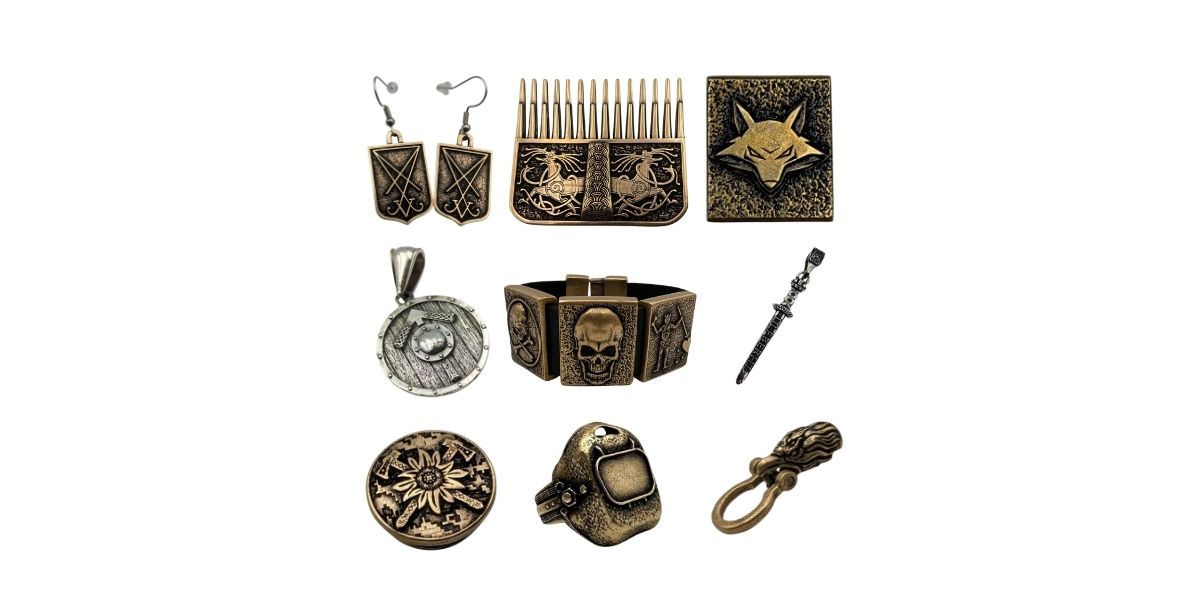Instructions for gilding care
What is Gilding?
Gilding is the process of applying a very thin layer of gold to an object for decorative, protective, or combined decorative-protective purposes. The base material for our gilding process is Italian bronze (88% copper, 12% tin). The item is coated with a thin sheet of gold, which is attached to the surface through electroplating.
How to Clean Gilded Items at Home?
Method 1: Washing with Soapy Solution.
Before washing, it is important to first remove dust, stains, and greasy residue to ensure more effective cleaning.
Gilded jewelry can be effectively cleaned by soaking it in soapy water.
You will need:
- Clean water. It is best to use distilled water, as it is free from impurities. Tap water often contains various chemicals used to protect people from diseases, which can react with the gilding. Distilled water can be purchased at any automotive store. If distilled water is not available, you can use regular drinking water, but allow it to sit for some time first.
- Liquid soap or soap flakes. To make soap flakes, simply grate a bar of regular household soap using a medium grater. For a small item, you will need approximately 50-100 grams of soap flakes. Avoid using cosmetic soap, as its components might react unpredictably with the gilding. If using liquid soap, opt for baby soap, as it generally does not contain unnecessary additives.
- Clean container for washing.
- Spoon or wooden stick for stirring.
- Cotton swabs.
- Gloves. Always work with gloves, as our hands accumulate a large amount of grease and dirt.
- Dry wipes or a soft cloth for cleaning eyeglasses.
Cleaning Procedure:
- Heat 200-300 ml (1-1.5 cups) of water to approximately 40 degrees Celsius in a clean container.
- Add a few tablespoons of soap to the water.
- Stir the mixture thoroughly.
- Place the jewelry into the soapy solution and leave it in a warm place for 30 minutes (if needed, place it on a radiator if it's not too hot).
- Gently clean hard-to-reach areas of the item using a cotton swab.
- Drain the soapy water, rinse the container, and fill it with fresh warm water.
- Rinse the jewelry with clean water.
- Dry each item thoroughly with a soft, lint-free cloth.
- Place the jewelry on a clean piece of paper to let it dry completely.
Method 2: Using Medical or Technical Alcohol.
Never buy alcohol from an unknown source, as it may contain unpredictable impurities. It is best to purchase alcohol from a pharmacy. Medical-grade alcohol contains 96.3-96.6% pure alcohol, with less than 4% impurities. Other types of alcohol might have unknown additives, and their reaction with your item is unpredictable.
Technical alcohol, known as denatured alcohol, can also be used.
You will need:
- Clean water.
- Clean container for washing.
- Cotton swabs.
- Gloves. Always work with gloves, as our hands accumulate a large amount of grease and dirt.
- Medical or Technical alcohol.
- Dry wipes or a soft cloth for wiping eyeglasses.
Cleaning Procedure:
- Rinse the jewelry in clean warm water (temperature recommendations can be found in Method 1).
- Dry the jewelry with a soft, lint-free cloth.
- Apply a small amount of alcohol to a clean cloth and gently wipe the item. For dirt in hard-to-reach places, use a cotton swab dipped in alcohol.
- Afterward, wipe the jewelry again to restore its shine.
If white streaks appear on the items after cleaning, it indicates that the alcohol was not pure enough. In this case, rinse the jewelry again and polish it with a cloth.
Additional Recommendations
- Avoid contact of the items with aggressive chemicals and remove them before swimming in a pool or taking a bath.
- Prevent interaction with cosmetic products, creams, perfumes, and lotions.
- Avoid contact with rough surfaces, as this can cause scratches and damage to the coating.
- Store items in a separate pouch.

